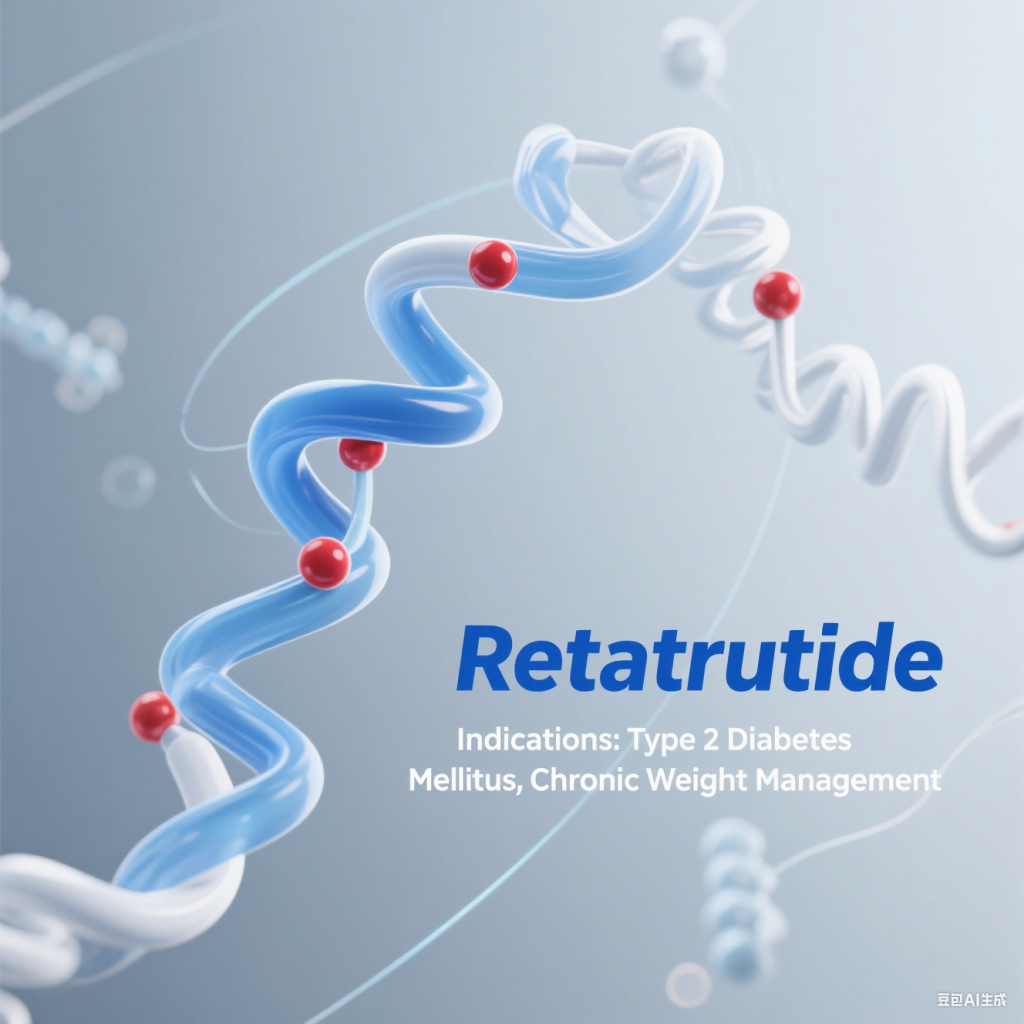Revolutionizing Obesity and Diabetes Treatment with Unmatched Efficacy
Core Innovations and Mechanism of Action
Triple-Receptor Agonist Design
Retatrutide (LY3437943) is the world’s first GLP-1R/GIPR/GCGR triple agonist, engineered to simultaneously activate:
- GLP-1 Receptor: Suppresses appetite, delays gastric emptying, and enhances insulin secretion.
- GIP Receptor: Boosts insulin sensitivity and regulates lipid metabolism.
- Glucagon Receptor (GCGR): Promotes energy expenditure and hepatic fat oxidation.
This synergistic mechanism achieves superior metabolic control compared to single- or dual-target agents like semaglutide or tirzepatide.
Structural Engineering
- A 39-amino acid peptide modified with non-natural residues (e.g., α-aminoisobutyric acid at Aib2/Aib20) to resist enzymatic degradation.
- C20 fatty diacid side chain extends half-life to ~6 days, enabling once-weekly subcutaneous dosing.
Unprecedented Clinical Efficacy
| Parameter | Retatrutide (12mg) | Tirzepatide (15mg) | Semaglutide (2.4mg) |
| Weight Loss (48 wks) | 24.2% | 20.9% | 17% |
| HbA1c Reduction | 2.5–3.0% | 2.07% | 1.75% |
| Liver Fat Reduction | 82.4% | N/A | ≤40% |
- Obesity: 48-week Phase II trials showed 24.2% mean weight reduction—the highest ever achieved pharmacologically, nearing surgical outcomes (e.g., gastric bypass).
- Type 2 Diabetes (T2D): HbA1c dropped by 2.02% at 24 weeks, outperforming traditional therapies.
- Metabolic Dysfunction-Associated Steatotic Liver Disease (MASLD): 86% of patients achieved normalized liver fat (<5%) at 24 weeks with 12mg dosing.
Therapeutic Indications
Obesity: BMI ≥30 or ≥27 with comorbidities (e.g., hypertension, MASLD).
Type 2 Diabetes: Especially effective for obesity-linked T2D, improving both glycemia and weight.
Expanding Applications:
- Cardiovascular risk reduction.
- Obstructive sleep apnea and chronic low back pain (Phase III trials ongoing).
⏳ Regulatory Timeline and Market Projections
- Current Status: Global Phase III trials (TRIUMPH program) for obesity, T2D, and cardiovascular disease.
- China Progress: Received NMPA clinical trial approvals in 2024 for obesity management.
- Expected Launch: U.S. approval anticipated in 2026, with China following shortly after.
- Sales Forecast: Projected to exceed $27 billion annually, challenging Novo Nordisk’s market dominance.
⚠️ Safety Profile and Challenges
- Common Side Effects:
- Mild-to-moderate GI disturbances (nausea: 30–40%; diarrhea: 20–30%), typically transient.
- Dose-dependent heart rate increase (peaks at 24 weeks, then declines).
- Long-Term Risks:
- GCGR activation requires monitoring for hepatic/muscle metabolic impacts.
- High cost (~$15,000/year) may limit accessibility.
Future Directions
Formulation Innovations:
- Oral versions (e.g., orforglipron) to enhance compliance.
- AI-driven dosing optimization for personalized therapy.
Combination Therapies:
- Synergy with SGLT2 inhibitors or FXR agonists (e.g., obeticholic acid) for enhanced metabolic benefits.
Broader Applications:
- Neurodegenerative diseases (e.g., Alzheimer’s) via insulin resistance modulation.
- Cardiovascular and renal protection, building on GLP-1 receptor agonist legacy.
Conclusion: Redefining Metabolic Therapeutics
Retatrutide’s 24.2% weight-loss efficacy and multi-organ benefits position it as a paradigm shift in obesity and diabetes management. While Phase III results (2025) will solidify its clinical role, challenges in cost control and long-term safety remain. As the vanguard of unimolecular polypharmacology, Retatrutide exemplifies how structural biology and receptor synergy can unlock unprecedented therapeutic potential—ushering in a new era for metabolic health.
References: Data synthesized from Eli Lilly trials, NEJM, The Lancet, and pharmacology reviews (2023–2025).

